In the world of wine appreciation, decanters have emerged as more than just functional tools; they are now pivotal elements in the art of serving and savoring wine. Their role extends beyond mere aesthetics, playing a crucial part in enhancing the wine’s character. As these vessels evolve, they not only cater to the traditional needs of aerating and sediment separation but also embody a blend of sophistication and innovation. This transformation has not only captured the attention of wine enthusiasts but also marked a significant trend in the market, where the selection of a decanter is as nuanced as the wine it holds. Today, decanters stand as symbols of elegance and expertise in the wine experience, reflecting an understanding of both tradition and modernity in the beverage industry.
Table of Contents
1. Decanter varieties and their functions
2. Market insights: Decanter trends in 2024
3. Criteria for selecting quality decanters
4. Spotlight on top decanters of 2024
5. Conclusion
Decanter varieties and their functions
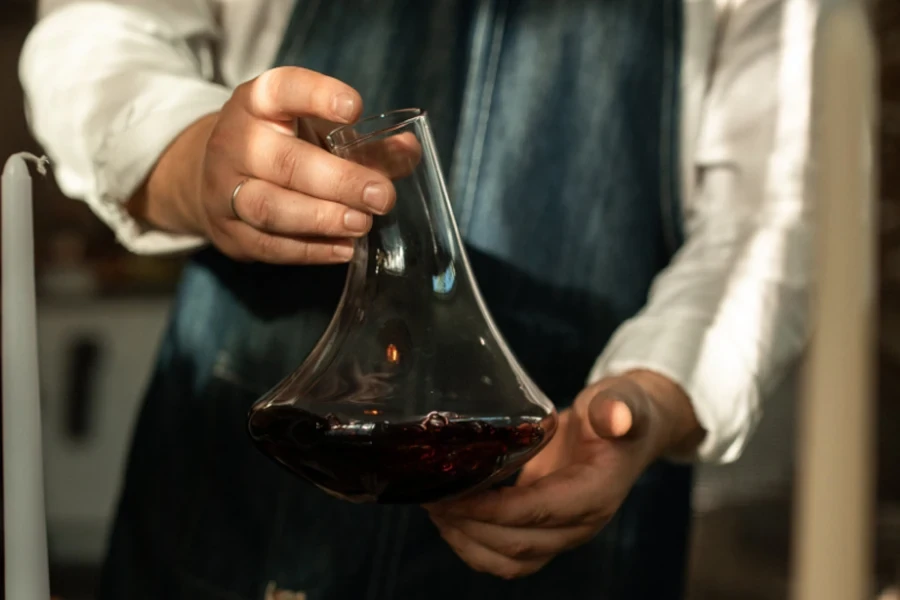
In the intricate world of wine appreciation, decanter varieties and their functionalities stand as a testament to the blend of tradition and innovation. These vessels are not merely containers; they are instruments that profoundly influence the wine experience.
Differentiating between decanter styles
The design and material of a decanter significantly dictate its appeal and utility. Traditional decanters, typically crafted from crystal or high-quality glass, are cherished for their classic elegance. These decanters often feature a wide base, making them ideal for aerating bold, full-bodied red wines. The wide base facilitates a greater surface area for the wine, allowing more oxygen to interact with the wine, thereby enhancing its flavors and aromas.
Contemporary decanter designs, however, embrace a more modern aesthetic, often incorporating innovative materials and shapes. These designs are not only visually appealing but are crafted to complement the modern dining and wine-tasting experiences. They balance form with function, catering to the needs of today’s wine enthusiasts who seek a combination of style and practicality.
Functional aspects of decanter types
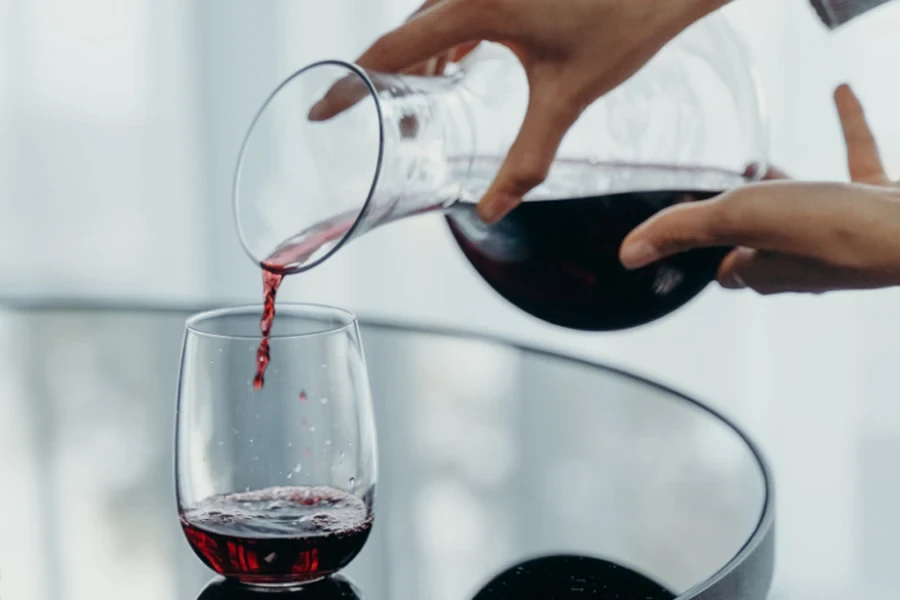
The functionality of a decanter is as vital as its design. The shape and volume of a decanter directly influence its ability to aerate wine and separate sediments, crucial aspects in enhancing the wine’s taste and purity. For instance, decanters with a narrow design are more suited for wines that require less exposure to air, such as lighter reds or white wines. These decanters are crafted to preserve the delicate characteristics of such wines.
Decanters designed with built-in filters or strainers offer an added advantage, especially for older wines prone to sedimentation. These features ensure a clear, sediment-free wine, contributing to a more refined tasting experience. In this regard, the choice of a decanter becomes a crucial decision for those in the wine industry, as it can significantly impact the presentation and enjoyment of the wine.
In conclusion, the selection of the right decanter is a nuanced decision that requires an understanding of both its aesthetic and functional aspects. Whether for use in traditional settings or contemporary wine bars, the appropriate decanter not only enhances the wine’s qualities but also elevates the overall experience of wine tasting.
Market insights: Decanter trends in 2024
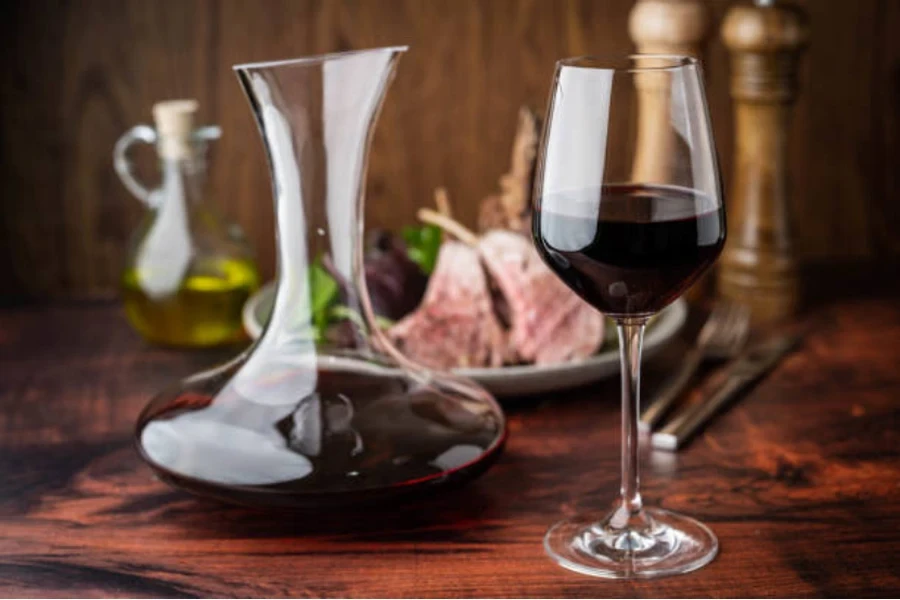
In the ever-evolving world of wine accessories, decanters have carved out a significant niche in the market. The global decanter market, valued at $354.7 million in 2020, is projected to reach $528.3 million by 2030, registering a Compound Annual Growth Rate (CAGR) of 4.1% from 2021 to 2030. This growth trajectory speaks volumes about the increasing importance and demand for decanters in both commercial and residential settings.
Current market dynamics for decanters
The decanter market is witnessing a surge, propelled by the growing demand for alcohol consumption, especially in developing economies. With an increasing trend of dining out, the consumption of wine, whiskey, and other spirits has seen a substantial rise. Decanters, used for aerating, storing, and serving alcohol, have become a symbol of status and are widely used in homes as well as bars, pubs, and restaurants. The growth is also fueled by the expansion of the hospitality industry, particularly in the regions of Asia-Pacific, Latin America, and Africa.
Material-wise, the market is segmented into glass and plastic, with glass leading in terms of market share. However, the use of plastic as a cost-effective and durable alternative is gaining traction. The glass segment’s dominance is attributed to its status symbol and quality, while plastic decanters offer a lightweight and affordable option.
Innovations and design shifts
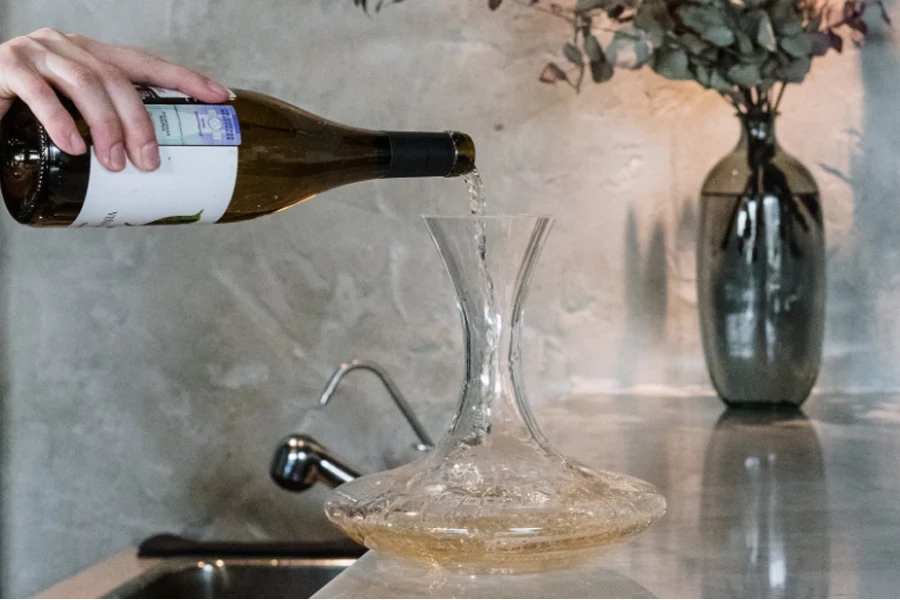
The decanter market is not just growing; it’s evolving with innovative designs and functionalities. Contemporary decanters are moving away from traditional forms, incorporating unique designs like globes, diamonds, animals, and even decanters with taps. These innovative designs are seeing an upsurge in both residential and commercial segments, catering to a clientele that values aesthetics and novelty.
The shift in consumer behavior towards luxury and status symbols is influencing the decanter market. Stakeholders are increasingly focusing on creating new, innovative designs that stand out from conventional decanters. This trend is evident in the introduction of plastic decanters, which are not only cost-effective but also offer versatility in design and an unbreakable nature, making them increasingly popular among a wider range of consumers.
In summary, the decanter market in 2024 is characterized by robust growth, driven by changing consumer preferences and a growing demand for luxury and innovative designs. As the market continues to evolve, it presents a dynamic landscape for businesses and enthusiasts alike, with a rich variety of options that cater to both traditional tastes and modern aesthetics.
Criteria for selecting quality decanters
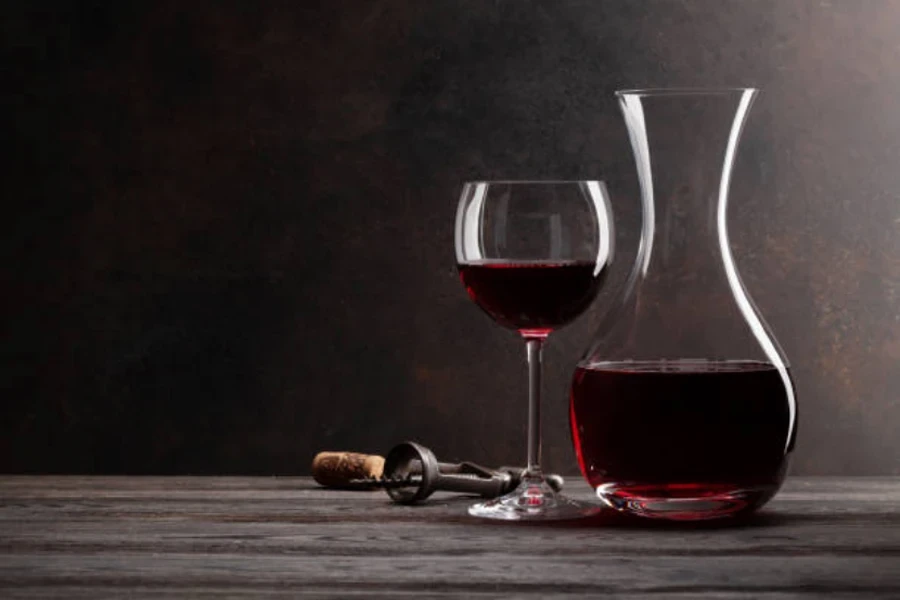
The selection of a quality decanter is a nuanced decision that hinges on understanding various crucial aspects. These include material and craftsmanship, as well as capacity and ease of use, all of which significantly influence the wine’s aeration process and the overall tasting experience.
Material and craftsmanship considerations
In the selection of wine decanters, material quality and craftsmanship are of paramount importance. These aspects not only determine the decanter’s functionality but also its longevity and aesthetic appeal. The choice of material, whether glass or crystal, has a significant impact on the wine’s aeration process and the overall sensory experience.
Glass Decanters:
Glass decanters are known for their durability and versatility. They are typically more affordable than their crystal counterparts and are well-suited for frequent use. Glass decanters come in various thicknesses and qualities. For instance, borosilicate glass, known for its durability and resistance to thermal shock, is an excellent option for those seeking a robust and long-lasting decanter. Glass decanters are also less prone to chipping and breakage compared to crystal, making them a practical choice for regular use.
Crystal Decanters:
Crystal decanters, on the other hand, are prized for their clarity and brilliance. They often feature intricate designs and finer details, reflecting light beautifully and enhancing the visual presentation of the wine. Lead crystal, known for its high refractive index, adds a level of sophistication and elegance to the wine service. However, it’s important to note that lead crystal requires careful handling and maintenance due to its delicate nature.
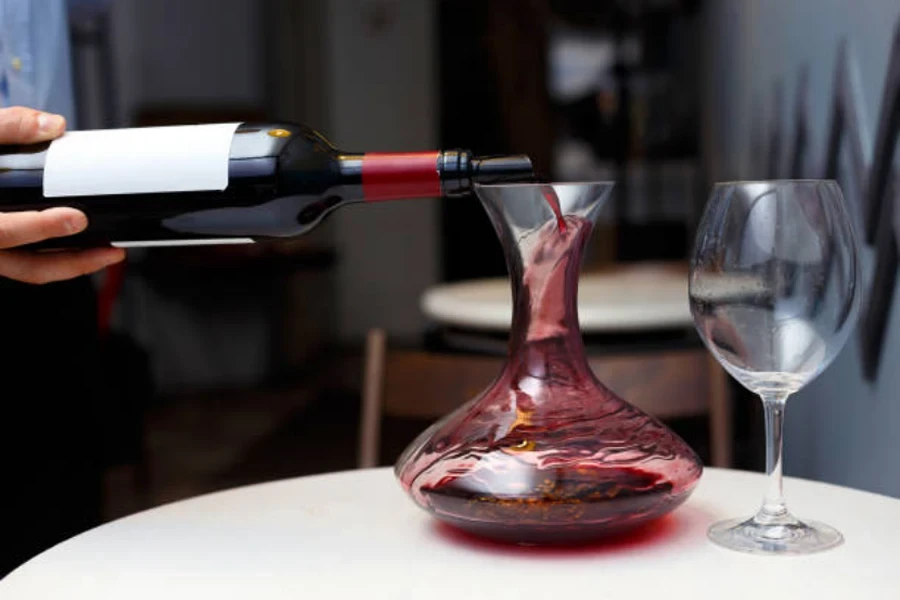
Craftsmanship:
The craftsmanship of a decanter is crucial in determining its quality. Artisanal decanters, hand-blown and hand-cut, offer unique designs and a personal touch that machine-made decanters cannot replicate. The precision in crafting the neck and spout of the decanter, for instance, plays a significant role in preventing drips and ensuring a smooth pour. The shape and size of the decanter also influence the aeration process, with wider bases allowing for greater surface area contact between the wine and air.
The thickness of the decanter’s walls is another aspect to consider. Thicker walls provide better insulation, which can be particularly beneficial for maintaining the temperature of the wine. Conversely, thinner walls offer a more delicate and refined aesthetic, though they may be more fragile.
In summary, when selecting a decanter, it’s essential to consider both the material and craftsmanship. Glass decanters offer practicality and durability, while crystal decanters provide elegance and a heightened sensory experience. The level of craftsmanship, from the precision of the design to the quality of the material, directly impacts the decanter’s functionality, durability, and aesthetic appeal. A well-chosen decanter not only enhances the wine-tasting experience but also serves as a statement piece in any wine connoisseur’s collection.
Assessing decanter capacity and ease of use
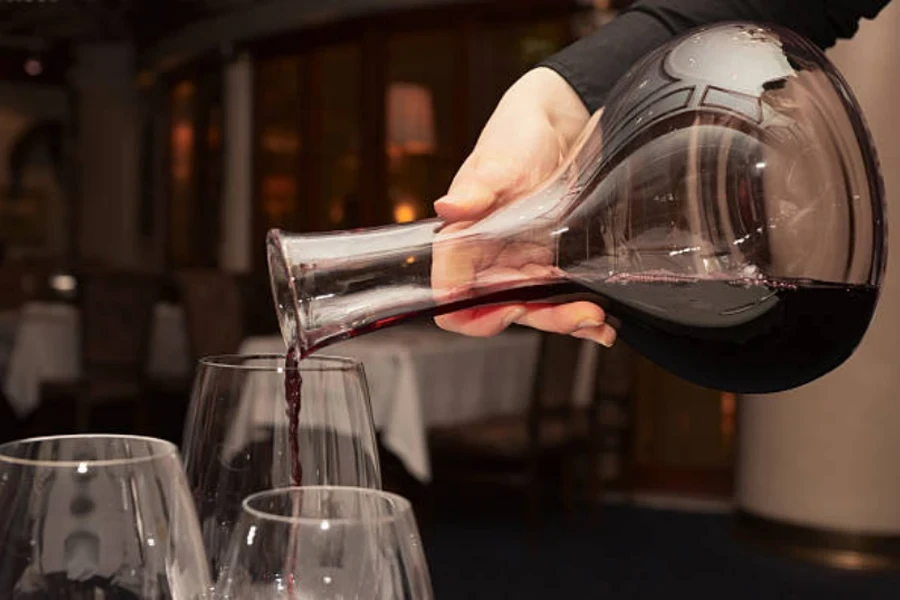
Choosing the right decanter involves a careful assessment of its capacity and ease of use, which are crucial for an enhanced wine-tasting experience. These factors determine not just how the wine is aerated but also how conveniently it can be served and maintained.
Capacity Considerations:
The capacity of a decanter is a key aspect, particularly in relation to the volume of wine it is intended to hold. Standard decanters typically have a capacity of around 750 ml, equivalent to a standard bottle of wine. This size is ideal for most personal and commercial use, allowing for sufficient aeration without the need for transferring any leftover wine back into the bottle.
For those hosting larger gatherings or tasting sessions, larger decanters with a capacity of 1.5 liters or more are available. These larger decanters are ideal for decanting more than one bottle of wine at a time, providing a practical solution for busy environments. However, it’s important to note that the larger the decanter, the more surface area is exposed to air, which can affect the aeration process.
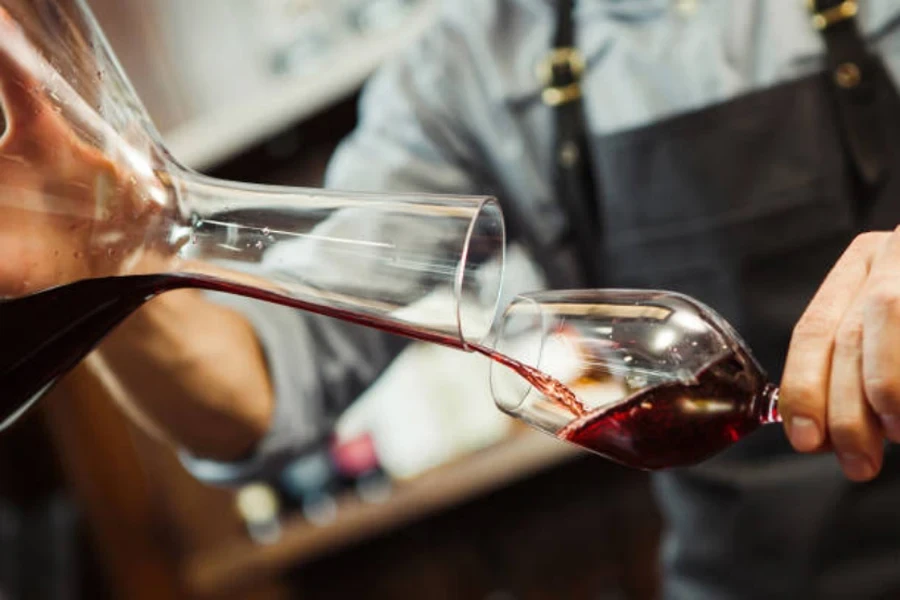
Ease of Use:
When it comes to ease of use, the design of the decanter plays a vital role. A well-designed decanter should have a neck wide enough to allow easy pouring in and out, reducing the risk of spills and drips. The shape of the decanter should also facilitate a smooth flow of wine, ensuring a steady and controlled aeration process.
The handling of the decanter is another important aspect. Decanters with ergonomic designs, featuring a balanced weight distribution and a comfortable grip, are preferable. This ensures that pouring the wine, especially in a professional setting, is a seamless and elegant process.
Maintenance and Cleaning:
Maintenance is a critical factor in the selection of a decanter. Decanters with simpler shapes are generally easier to clean, while those with intricate designs and narrow necks may require specialized cleaning tools or methods. It’s also worth considering whether the decanter is dishwasher safe, as this can greatly simplify the cleaning process.
In summary, when selecting a decanter, its capacity should align with the intended use, whether for individual servings or larger gatherings. The ease of use, encompassing aspects like design, handling, and maintenance, is equally important to ensure a seamless wine service experience. A well-chosen decanter not only enhances the wine’s flavor and presentation but also adds a touch of elegance and efficiency to the wine-tasting experience.
Spotlight on top decanters of 2024

The selection of a wine decanter is crucial for any connoisseur or industry professional, and 2024 offers a range of exceptional models. These decanters not only enhance the wine’s flavors and aromas but also add a touch of elegance to the overall presentation.
Leading models and their unique features
The year 2024 has introduced some remarkable decanter models, each designed to enhance the wine-drinking experience. Let’s explore five noteworthy decanters, focusing on their unique features.
Riedel Ultra Decanter:
Riedel, a brand known for its crystal stemware since 1756, offers the Ultra Decanter, valued at around $55. This decanter is acclaimed for its Cabernet-specific design, yet its versatility makes it suitable for other varieties like Zinfandel or Grenache. The spout is expertly curved to prevent dripping, and its elegant appearance makes it a stylish addition to any bar cart or wine fridge. Praised for its pedigree and quality, the Riedel Ultra Decanter is a top choice for budding wine collectors who prioritize wine quality over glassware expense.
Spiegelau Authentis Decanter:
The Spiegelau Authentis is celebrated for its balance of elegance and practicality. This decanter’s design caters to a wide range of wines, making it a versatile choice for both personal and professional use. Its wide and shallow bowl is ideal for efficient aeration, bringing out the full aromatic complexity of the wine. Users appreciate its outstanding value, combining sophisticated design with functionality, without an excessive price tag.
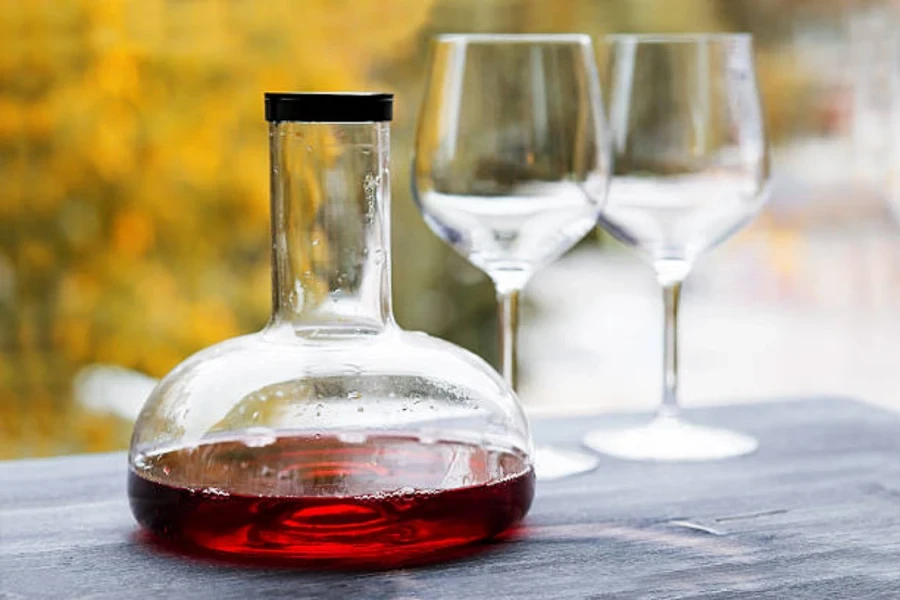
Andrew James Decanter:
The Andrew James Decanter is known for combining elegance with affordability. Its design ensures effective aeration, suitable for enhancing the flavors of various wines. It is particularly noted for its ease of use and practicality, making it a popular choice among wine enthusiasts. The decanter’s ergonomic design ensures comfortable handling and drip-free pouring, making it an ideal choice for busy hosts and professional settings alike.
Dartington Crystal Decanter:
The Dartington Crystal Decanter is recognized for its specialized design tailored to aged wines with significant sediment, such as vintage Ports. Crafted from high-quality crystal, this decanter is appreciated for its ability to clear sediment effectively while maintaining the integrity of the wine’s complex flavors. Its smaller size and refined design make it manageable and practical for pouring, offering a combination of elegance and functionality. Users commend the Dartington Crystal Decanter for its durability and clarity, which enhances the visual appeal of the wine, making it an ideal choice for both personal collections and professional settings.
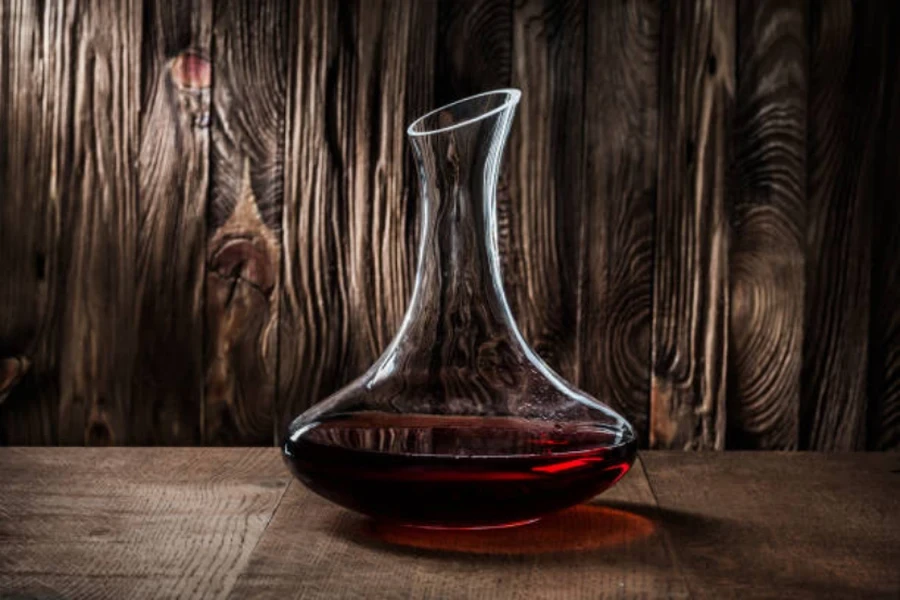
Arcoroc Carafe:
The Arcoroc Carafe stands out for its simplicity and effectiveness in sediment removal, particularly for wines that do not require extensive aeration. Its design facilitates a clear pour, efficiently separating sediment without over-aerating the wine. Made from robust glass, the Arcoroc Carafe is noted for its durability and ease of maintenance, making it a staple in the wine industry. Users appreciate its straightforward design and practicality, especially when serving older vintages that have developed tertiary characters and require delicate handling.
Each of these decanters offers unique features to enhance the wine-drinking experience. Whether it’s for a young, vibrant Syrah or an aged, complex Port, these decanters cater to different needs, ensuring that every bottle of wine is presented and enjoyed at its best.
Comparative analysis of performance
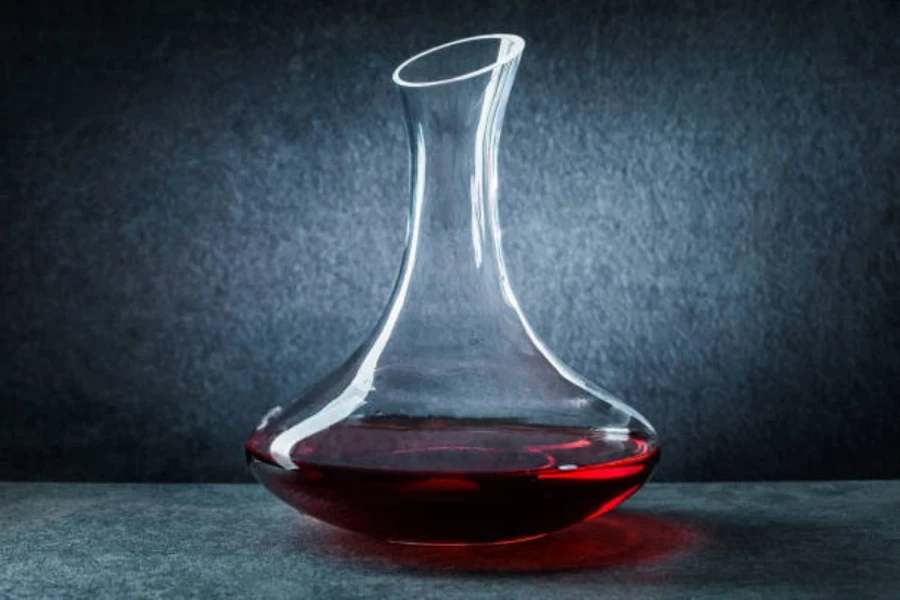
When comparing the Riedel Ultra, Spiegelau Authentis, Andrew James, Dartington Crystal, and Arcoroc carafes, it’s essential to consider their distinct features and usage scenarios, performance, design, and user feedback.
Performance in Different Usage Scenarios:
The Riedel Ultra is optimal for young, full-bodied wines needing aeration, maximizing the liquid surface in contact with air.
Spiegelau Authentis is versatile, suitable for both young and aged wines due to its efficient aeration design.
Andrew James excels in user-friendly design, making it a practical choice for everyday use.
Dartington Crystal is specialized for aged wines with sediment, offering clarity and precision in sediment removal.
Arcoroc Carafe is effective for older wines that require sediment separation but minimal aeration.
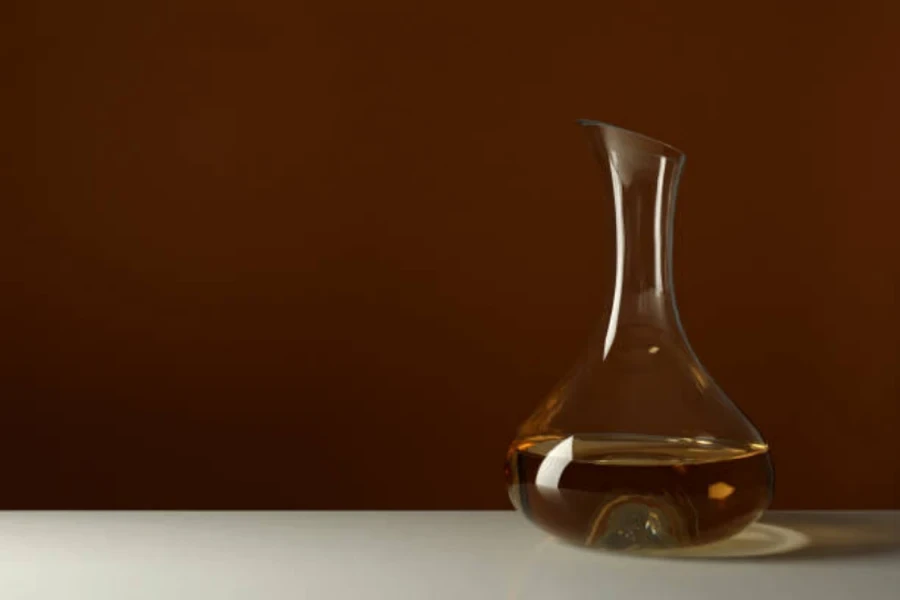
Design and Aesthetics:
Riedel Ultra boasts a classic elegance with a wide, shallow design.
Spiegelau Authentis combines sophistication with practicality, offering a stylish yet functional look.
Andrew James features an ergonomic design for comfortable handling and drip-free pouring.
Dartington Crystal showcases a refined and sophisticated design, perfect for displaying aged wines.
Arcoroc Carafe offers a straightforward, no-frills design focusing on functionality.
User Feedback and Satisfaction:
Users of Riedel Ultra appreciate its efficient aeration for young wines and its elegant appearance.
Spiegelau Authentis receives praise for its versatility and outstanding value.
Andrew James is lauded for its affordability and ease of use, making it popular among casual wine drinkers.
Dartington Crystal is favored for its specialized use with vintage wines, ensuring sediment-free pours.
Arcoroc Carafe is commended for its practicality and effectiveness in handling wines with sediment.
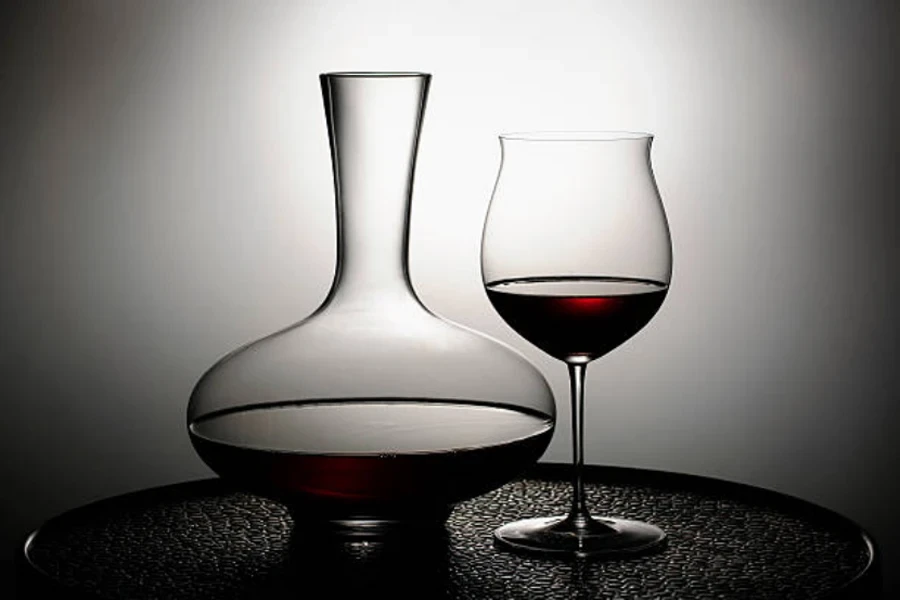
In summary, each decanter serves specific needs: Riedel Ultra for aeration, Spiegelau Authentis for versatility, Andrew James for everyday practicality, Dartington Crystal for aged wines, and Arcoroc Carafe for sediment removal. Their design, performance, and user feedback vary, catering to different preferences and wine-tasting experiences. The choice depends on the specific requirements of the wine and the setting in which it will be served.
Conclusion
Selecting the right decanter in 2024 is a nuanced decision that profoundly impacts the wine experience. The choices range from traditional models like the Riedel Ultra, known for aerating young wines, to innovative ones like the Arcoroc Carafe, designed for older wines with sediment. Each decanter, with its unique design and functionality, caters to different wine types and occasions. This variety underscores the importance of understanding specific wine characteristics and the desired outcome of aeration. Ultimately, the right decanter not only enhances the wine’s flavors and aromas but also elevates the overall presentation and enjoyment of each bottle.




